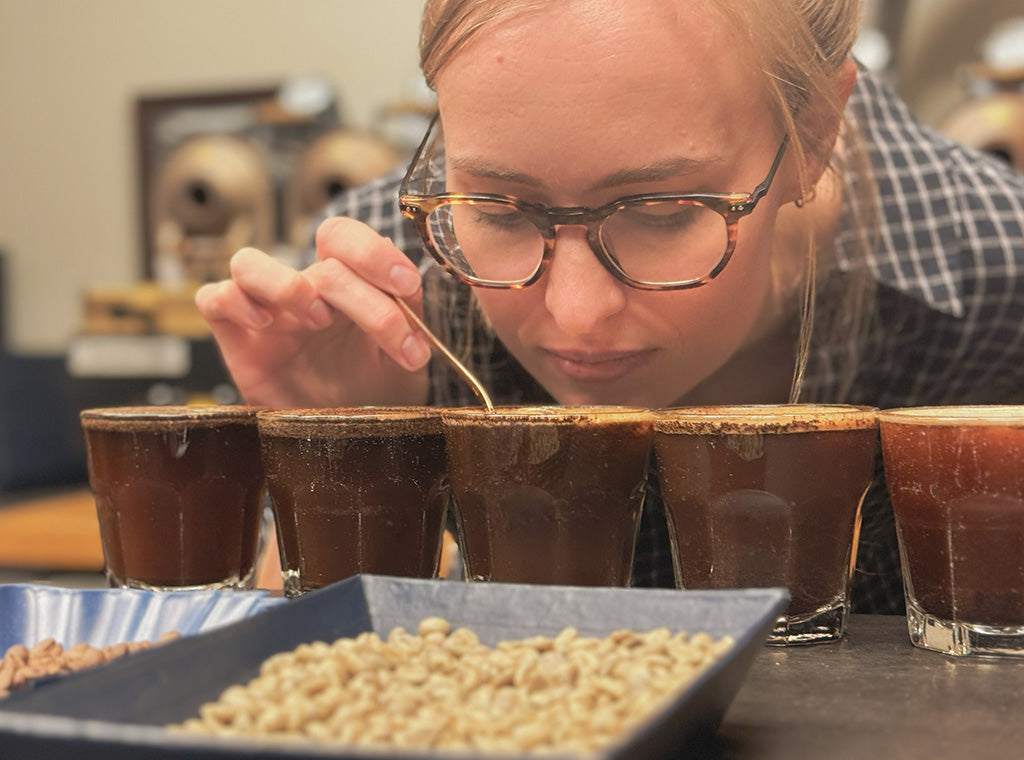
Ask an Expert: Alysse Wishart
We love sourcing, roasting, smelling, tasting, crafting, and drinking coffee. That’s why it’s time to meet our Coffee People—like Alysse Wishart, Peet’s Coffee Quality Specialist.
What aspect of Peet’s do you think people don’t know about, but should?
My job! Or rather, what the Coffee Department’s role is at Peet’s. I work with our coffee buyers to inform the quality of the green coffee that we purchase and ensure it’s up to our standards. Every lot of coffee that we buy undergoes a quality evaluation process called cupping that is standardized throughout the coffee industry. Every coffee is cupped at least twice, before it leaves its country of origin and then again when it arrives in the United States. Samples of each coffee are roasted, cupped, and numerically scored on characteristics like body, acidity, and aftertaste. We see anywhere from 15 to 30 samples every day, and at five cups for each, it’s a lot of coffee!
How far have you traveled for coffee, and why?
Last year, I had the incredible opportunity to visit Colombia with Peet’s. I went as part of a group to launch the next phase of a project that builds entrepreneurship skills for women coffee farmers in Huila. Getting to see a coffee farm, pick coffee, and most importantly, meet coffee farmers was a dream come true. To finally close the gap between origin and roasting, and to do it 6,000 feet up a mountain in one of the most beautiful landscapes in the world, was a surreal and life changing experience.
What coffee fact do you love to share with people?
Coffee is one of the most chemically complex foods we consume. It has more chemical compounds than wine, and we’re learning more about it every day. Everything you taste in a sip of coffee can be traced back to its molecular elements, and these are what give us the tasting notes you see on coffee bags. A coffee may smell or taste caramelly and of course, the coffee hasn’t interacted with any caramel but the molecule 5-methylfurfural (C6H6O2), a volatile compound that is a product of the Maillard reaction (roasting), triggers our memories of caramel and evokes that flavor for us.
When you evangelize about coffee, where do you start?
I always describe coffee to people as a miracle. Every coffee bean is one of two seeds from the fruit of a tropical tree. It’s painstaking work to harvest, ferment, pulp, dry, store, bag, and ship these weird little seeds, yet it happens in huge quantities all over the world. The journey that coffee goes on from being picked by hand, to being sent over oceans on a shipping vessel, to being quality tested and then carefully roasted and finally, brewed is a truly intricate one that always boggles my mind. Enjoying a cup of coffee every day is truly a miraculous thing.
What are you drinking right now?
Ethiopia Duet—since it's October—and likely the Small Batch coffee-of-the-month! I’m very lucky to play a role in the development of these online-only monthly limited time offers, so I always enjoy sipping on them and critiquing my own flavor notes. I like to brew as a pour over using a Kalita Wave Dripper.
-Alysse Wishart, Coffee Quality Specialist, Q Arabica Grader


